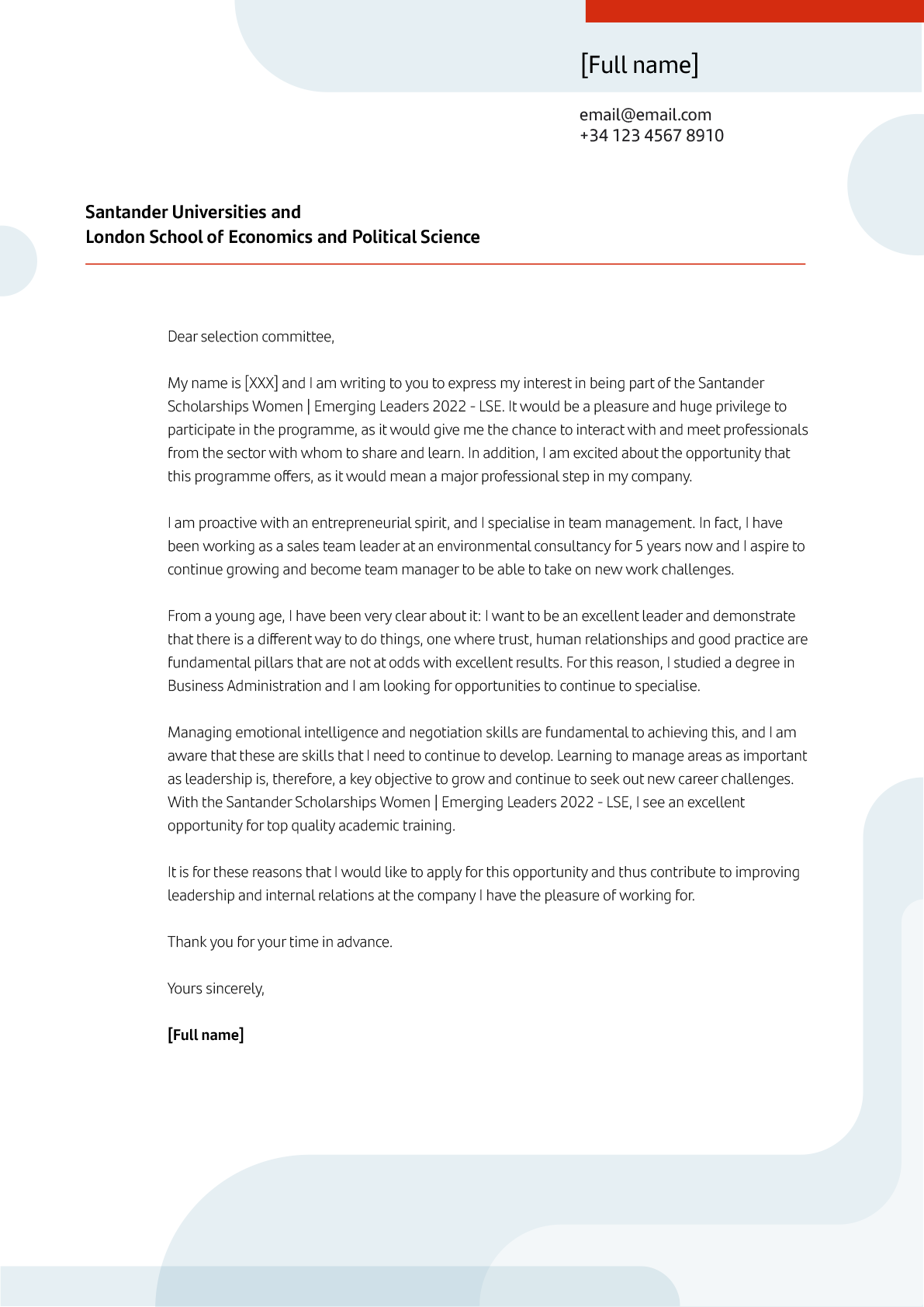Practical guide: how to write an effective motivation letter
Are you required to write a motivation letter but don't know where to start? It’s a document that might be difficult to tackle at first, but you'll soon find that, with a little practice and a few easy techniques, it can be a tool that helps you stand out over other candidates.
In fact, knowing how to write an effective motivation letter is a key step in the various types of selection process, and on many occasions, it often means the difference between a yes and a no. Ultimately, it's a matter of method, clearly-defined goals and a sprinkling of creativity. If you're looking to learn about the basic structure, pick up a few tips and find out which mistakes to avoid when writing a motivation letter, let us explain all.
Tips to write a motivation letter: mistakes to avoid
If you're wondering how to write a motivation letter, the first thing to bear in mind is that the aim of the document is to catch the reader's attention and convince them. To do this, you'll have to explain —both on a personal and professional level— exactly why you're applying for this job, scholarship, place on a course, etc. The point is to demonstrate you have a genuine interest, that your journey is aligned with what they're looking for, and that you know how to convey as much.
Before you get down to writing, you need to be very clear about your reasons. Note down everything you think should be included in your motivation letter. Consider key points such as academic achievements, ambitions, goals and, above all, the reasons why you want to apply for the specific course or job.
Once you've clarified that, it's time to begin. When it comes to drafting your motivation letter, we recommend the following:
Pay attention to the form, content, order of ideas and structure. Don't beat around the bush or you will lose your reader's precious attention. So, make sure you include only the necessary details and avoid elaborating on points that are irrelevant.
Use a clear, legible font of a size between 10 - 12, with line spacing and margins of 2.5cm.
Clear and concise wording is always a winner. Don't get bogged down in technicalities that divert attention away from what matters. But do make the most of compelling techniques such as storytelling.
Watch out for tone. Make sure it’s in line with the place you're applying to and keep it consistent from start to finish.
Research the institution, course and its values. One you are clear on that, align your objectives with those of the scholarship or job you're interested in.
Make your motivation letter one of a kind —just as the opportunity you're applying for is to you. To make the task easier, ask yourself a few questions such as: what would you do if you got it? Why do you want to be at that specific organisation or institution? What can you offer them?
Craft a conclusion that grabs the reader's attention and makes your motivation letter memorable. Exploit devices such as empathy and talk about how your life experience has brought you here or how this opportunity would help you to fulfil a personal goal.
Length matters: don't make it too brief, but don't write a lengthy essay either. One page should suffice, although it depends what you're applying for. A length of around 400 to 600 words is ideal.
Read it over several times, and even leave it overnight, if possible, to give yourself perspective on what you've written. Another useful technique is to read it out loud. This will help you to identify problems in the draft, spelling mistakes, inconsistencies and errors that might do some damage.
Whether you're writing or proofreading, there are a few things that you need to avoid. Some of the most common errors are:
Writing long paragraphs: avoid long, drawn-out paragraphs as they make reading more difficult and distract the reader's attention. Ideally, paragraphs should be no more than six lines each.
Using sentences with 'I': try not to use 'I' in sentences and avoid pompous descriptions of your skills. It's also a bad idea to use negatively-framed sentences.
Writing your letter using a template: don't copy an example letter word for word. One of the fundamentals of a motivation letter is to be natural and original.

Structuring a motivation letter for a scholarship, university or change of job
Besides following this advice to add clarity and a persuasive tone to your text, you should consider the standard structure of a motivation letter —although the content also needs to be original, in other words, a personal text that conveys who you are. In general, it will comprise the following elements:
A greeting, which varies depending on how formal the institution or company is that your letter of motivation is being sent to, in application for a scholarship or job. Start with a "Dear Mr/ Ms...", "To whom it may concern", "Dear Sir/Madam", or "Dear [job title/ position]".
An introduction paragraph that includes the reason for your letter and application. Get straight down to how you found out about the vacancy or opportunity, and your interest in applying. It is common to start with a stock phrase such as: "I am contacting you to...", "With this letter, I would like to express my interest...".
The body of your letter should consist of one or two paragraphs where you outline your talents, abilities, qualifications and interests that are directly related to the Master's, course or job you're applying for. Describe these points in a compelling way, persuading the reader to read on and learn more about you, your background and ambitions.
Then write a conclusion. If your motivation letter is for a scholarship, then here, emphasise why you're interested and indicate why you've chosen this specific course or programme. If it's for a job, underscore your hopes for a job interview.
Lastly, say thanks and add a formal closing, such as "Yours sincerely," and your full name.

Motivation letters: a tool to help you stand out
It is important to make the most of your motivation letter and stand out from the other candidates so, if there's anything missing or your letter fails to convince, ask your family or friends to read it over and share their opinion. A different perspective can help to change the focus.
However, if you follow these tips and methods, you should be able to craft a motivation letter that grabs the recipient's attention and helps you to secure the scholarship or job you want. After all, it's a key tool to boost your employability.
With this aim in mind, and to help people progress, overcome the challenges posed by the fourth industrial revolution and grow in an inclusive and sustainable way, Banco Santander backs three key concepts to promote employability: lifelong learning, reskilling, and upskilling. To this end, it has developed the Santander Open Academy website, a unique, pioneering global programme.
Do you want to develop professional skills that will help you access better job opportunities? Discover Santander Open Academy, the training space you need to keep growing.
Join our global platform for learning and professional development and access courses at zero cost, training content in a wide range of formats and scholarships from leading universities and institutions.
If, like us, you believe that we should never stop learning, sign up here and find out what we have for you!
Más posts interesantes que leer...
-
 12/04/2024 | Santander Universidades
12/04/2024 | Santander UniversidadesGrowth mindset: examples in the workplace to develop the right attitude toward challenges
Card text -
 01/03/2024 | Santander Universidades
01/03/2024 | Santander UniversidadesThe sandwich technique: how to deliver criticism in an assertive way
Card text

